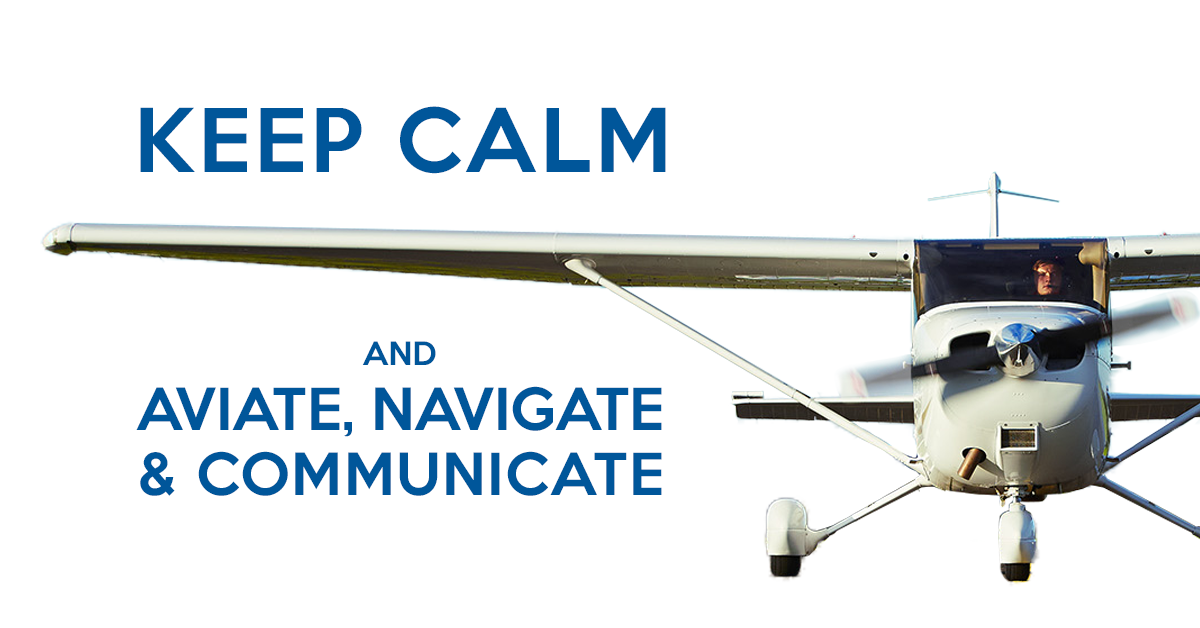By: Steven Daun, National Chief Pilot
There is a famous saying that “if you don’t make mistakes you don’t learn.” Whoever wrote that must have been a flight instructor. As flight instructors, we want our students to make mistakes while they are flying with us, so they don’t make them for the first time when they are alone in the airplane. Below are a few common mistakes made by students that, if handled correctly, will never be made again.
1. Missing Radio Calls
Yes, pilots do miss radio calls. Think about it. We attach two speakers to your ears and then pipe in all the radio transmissions of all the controllers and pilots on that frequency along with engine noise and background noise. So why doesn’t your instructor miss many of those calls? That’s because your instructor has learned a secret that they are trying to share with you. The secret is that you don’t need to listen to all that radio traffic. All you need to do is focus on listening for your number. It takes some practice, and the good news is that you will get the hang of this in a short amount of time. You can practice this from the comfort of your home by doing a few exercises:
- Buy a handheld radio and tune in a frequency that you normally use. Select one of the numbers you hear and pretend to be that aircraft. Listen to the instructions given to that number and try to anticipate what their response will be.
- Read and learn what the anticipated response will be to your question.
- Read and study as much as you can about common procedures and frequencies used at your airport.
2. Getting Lost
There are those who have gotten lost and those who will get lost at least one time, even if for a minute, while exercising their pilot privileges. This is okay if you know how to find your way back on course. The good news is that your instructor is going to show you exactly what to do when you don’t know where you are. It’s easier than you think. The key here is to remain calm, fly the airplane and follow your training.
3. Forgetting the Tail Tiedown
When you are in a rush or you don’t follow your checklist, things happen. One of the most common and embarrassing things that happens is when you start your engine, advance the throttle to begin to taxi and the plane doesn’t move. You are going to check your parking brake, then you are going to look outside of the window to see if you remembered the chalks. Then it hits you, and you think, “no, no I didn’t forget the tail tiedown.” By this time a few people are likely standing around looking at you to see what you are going to do next. Their faces may show both empathy and amusement, most likely because it has happened, or almost happened to them at some point. You jump out of your airplane and untie the tiedown, yet they don’t say a word. Yes, they have been in your shoes, and they also know you will never let that happen again. You can believe me when I tell you that if you are with an instructor, it is much worse for them than it is for you.
4. Freezing on the Controls
 There comes a time during primary flight training when some students will freeze on the controls. Flight instructors see this coming when a student stops speaking or exhibits signs of anxiety or fear. This is most common when practicing stalls or unusual attitudes. Students can minimize the chance this may happen by reading and understating the maneuver they are about to demonstrate. Perhaps the most important thing to remember is that your instructor is not going to let anything bad happen. Yes, we are there to teach, but most importantly, we are also there to protect you. If you communicate your fears and concerns to your instructor, you can work through them together.
There comes a time during primary flight training when some students will freeze on the controls. Flight instructors see this coming when a student stops speaking or exhibits signs of anxiety or fear. This is most common when practicing stalls or unusual attitudes. Students can minimize the chance this may happen by reading and understating the maneuver they are about to demonstrate. Perhaps the most important thing to remember is that your instructor is not going to let anything bad happen. Yes, we are there to teach, but most importantly, we are also there to protect you. If you communicate your fears and concerns to your instructor, you can work through them together.










